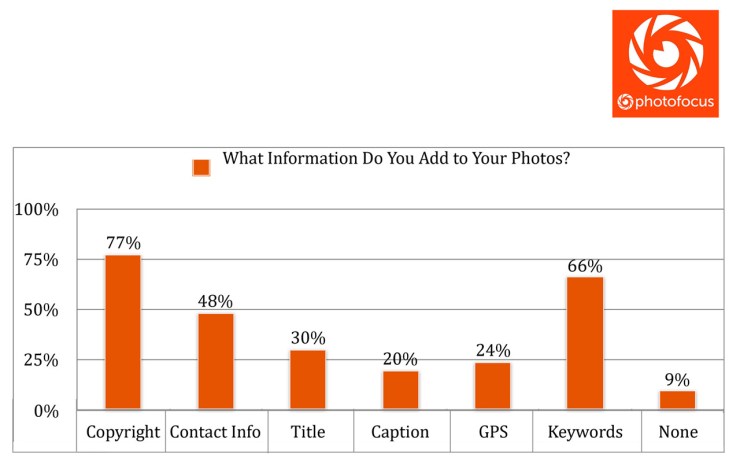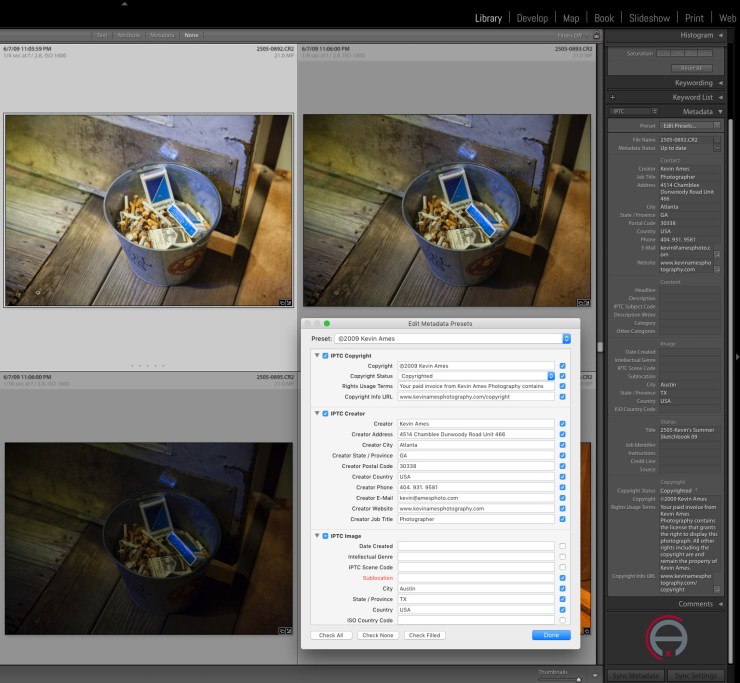What is metadata?
Metadata is information about a photograph that is added after the pixels are captured.
The first is the EXIF (Exhangeable Image File format) which adds the camera, manufacturer, focal length, GPS, exposure, and sometimes, depending on the camera, the owner’s name and copyright. EXIF metadata is added by the camera immediately after the pixels are recorded. Other forms of metadata are added by the photographer. These include IPTC (International Press Telecommunications Council) and XMP (eXtensible Metadata Platform). IPTC was originally developed as the method for adding captions and credits to wire photos for newspapers and early television newscasts.
Today IPTC has evolved into the standard for adding vital information to a photograph or video. The creator, address, country, copyright, usage, caption, headline, keywords, and much more are part of the IPTC protocol. XMP was introduced by Adobe in 2001 along with the Camera Raw plug-in. In 2004 Adobe, IPTC and the IDEAlliance worked together to produce the IPTC Core Schema for XMP. This incorporated IPTC data into XMP which is used largely with Adobe’s Lightroom, Bridge, and Photoshop as well as some other imaging programs.
Why add metadata?
Metadata contains all of the written information about a photograph. This is important. IPTC can hold copyright, usage and contact info for a photo, but only if it’s added to the photo. Current data shows that 85% of all of the photographs online have no metadata at all. Metadata added to a photo is more than an announcement of the creator’s name, contact info, and copyright. With the addition of a caption and a headline along with keywords, it becomes powerful “Google Juice.”
Photofocus readers weigh in
A recent poll of Photofocus readers skews totally in the opposite direction. 91% of our responding readers do add metadata to their photos with copyright info leading the list at 77%. While it seems that an article here is a bit of preaching to the converted, the need for metadata adds is apparent to the photographing public.

Adding metadata is easy
Adding metadata can easily be done in Adobe Bridge or (the easiest way) is to add it during import into Lightroom. A great feature in Lightroom is the metadata template. In Lightroom go to Metadata > Edit Metadata Template… A dialog opens with all of the IPTC fields to be filled out. Once completed, save it as a new template. I name them for the year the photo was made. The cover photo for this post was made in Austin, Tx. I named my template ©2009 Kevin Ames. Each time I imported photos into Lightroom, I edited the template with the most current information, saved it, then had Lightroom apply it to every photo imported.

Using metadata templates for photos already imported
This is the best! Select all of the photos in a folder in the Lightroom catalog. Go to the Library module and spin down the disclosure triangle for the Metadata panel. From the Presets menu choose the template you want to apply to all (or a group of selected) photos. That’s it. The metadata is globally applied. Now if the info in the template needs a bit of an update, choose Edit Presets… from the Preset menu. Make the changes, usually, the location needs an update, then click done. Lightroom prompts you to save the preset. Next, choose the updated preset and the work is done!
Best of all, the metadata is included in any photo exported from Lightroom unless it’s overridden in the Export dialog.
Tell your story with the second annual Visual Storytelling Conference!
Experience four days of interactive, online training sessions featuring a range of educational content with experienced photographers and content creators. This free event kicks off with a series of technical boot camps to build essential skills, followed by live, online sessions on photography, video, business and social media. Join live from March 10-13, 2022!
